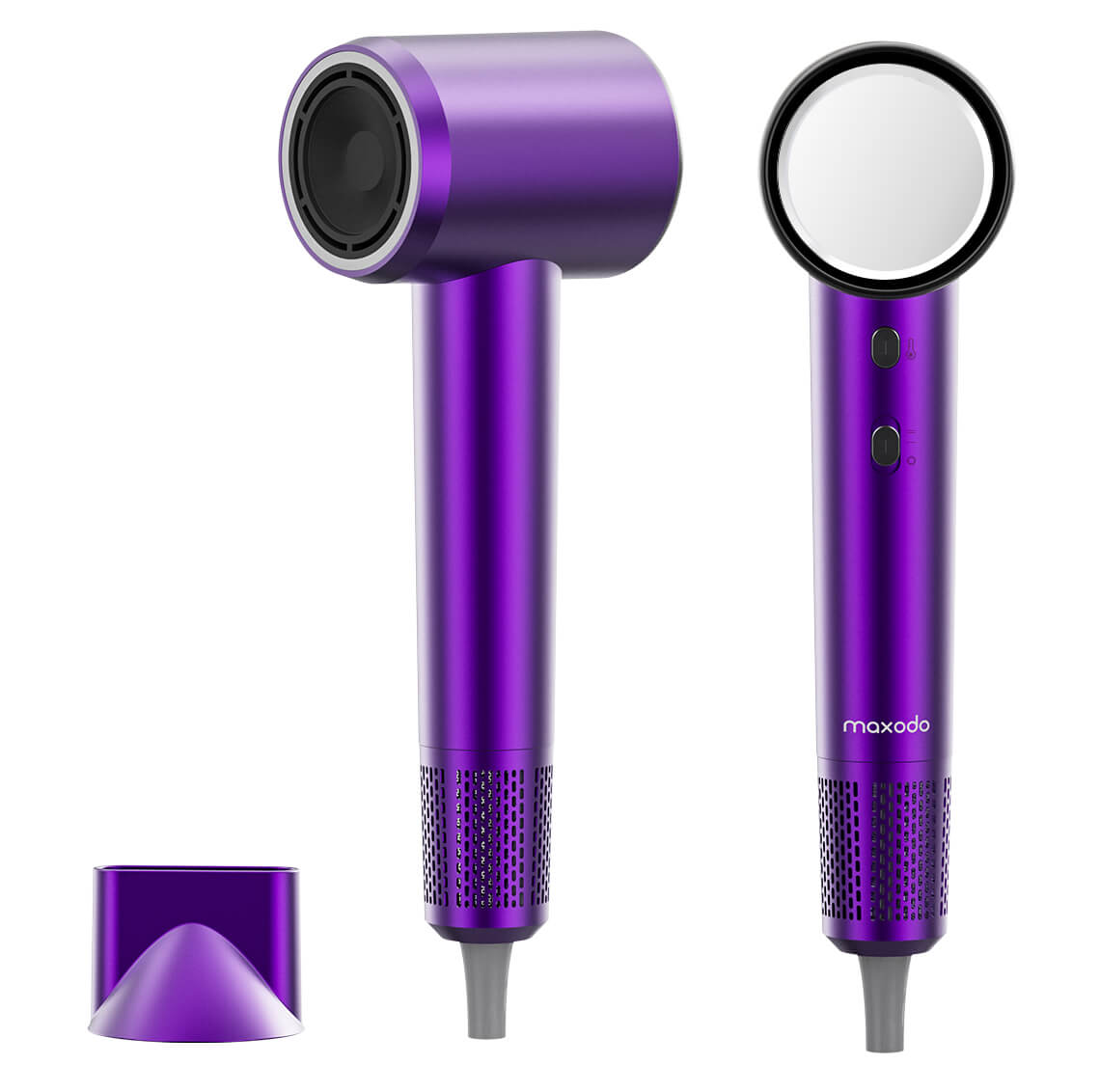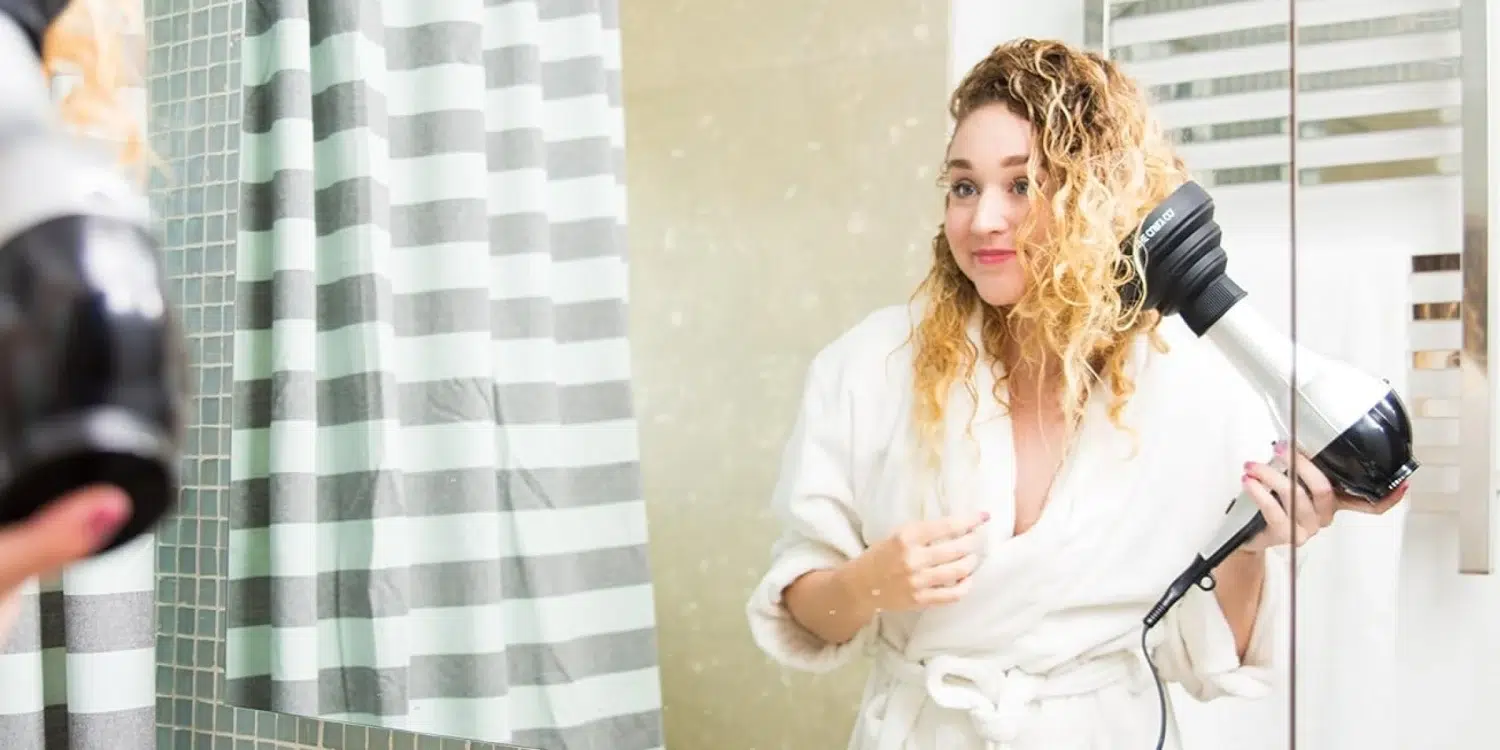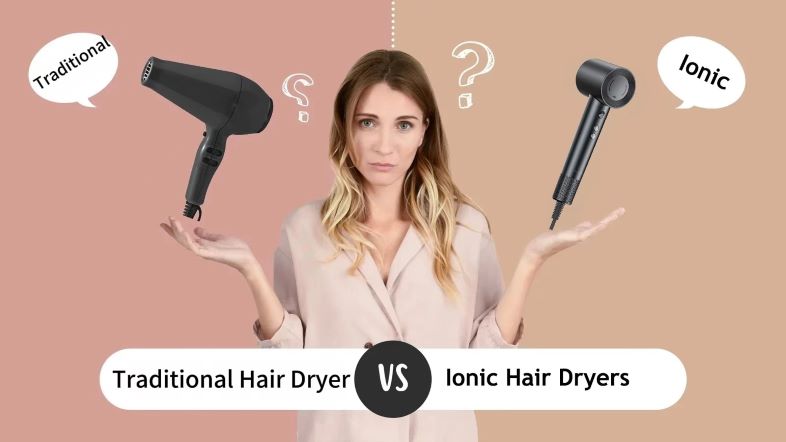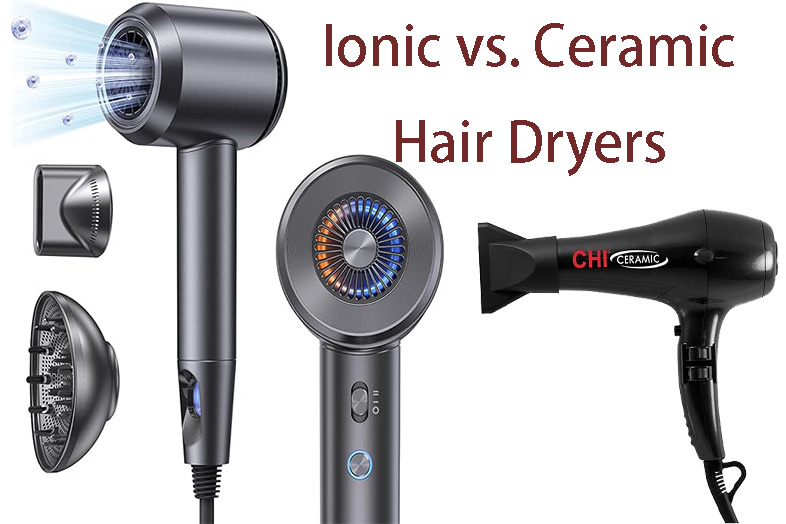Choosing the right hair dryer is about more than just finding a tool to dry your hair. It’s about selecting a device that enhances the health, look, and feel of your hair. The material of the hair dryer plays a pivotal role in achieving the desired outcome, whether it’s smooth, frizz-free hair or quick drying times. This guide will delve into the significance of different hair dryer materials and how they impact your hair’s health and styling.
Understanding the Importance of Hair Dryer Materials
Hair dryer materials directly influence the distribution of heat and the emission of ions, affecting how your hair reacts during and after drying. Some materials can help lock in moisture, protect against heat damage, and even enhance shine. Choosing the right material based on your hair type and needs can significantly improve your hair’s overall health and appearance.
How Different Materials Affect Your Hair
Each hair dryer material has unique properties that cater to different hair types and styling needs. For instance, ceramic distributes heat more evenly, reducing the risk of heat damage, while tourmaline emits negative ions that break down water molecules, speeding up drying time and reducing frizz. Understanding these effects can help you make an informed decision about which hair dryer material is best for you.
Chapter 1: Types of Hair Dryer Materials
Ceramic Hair Dryers: For Even Heat Distribution
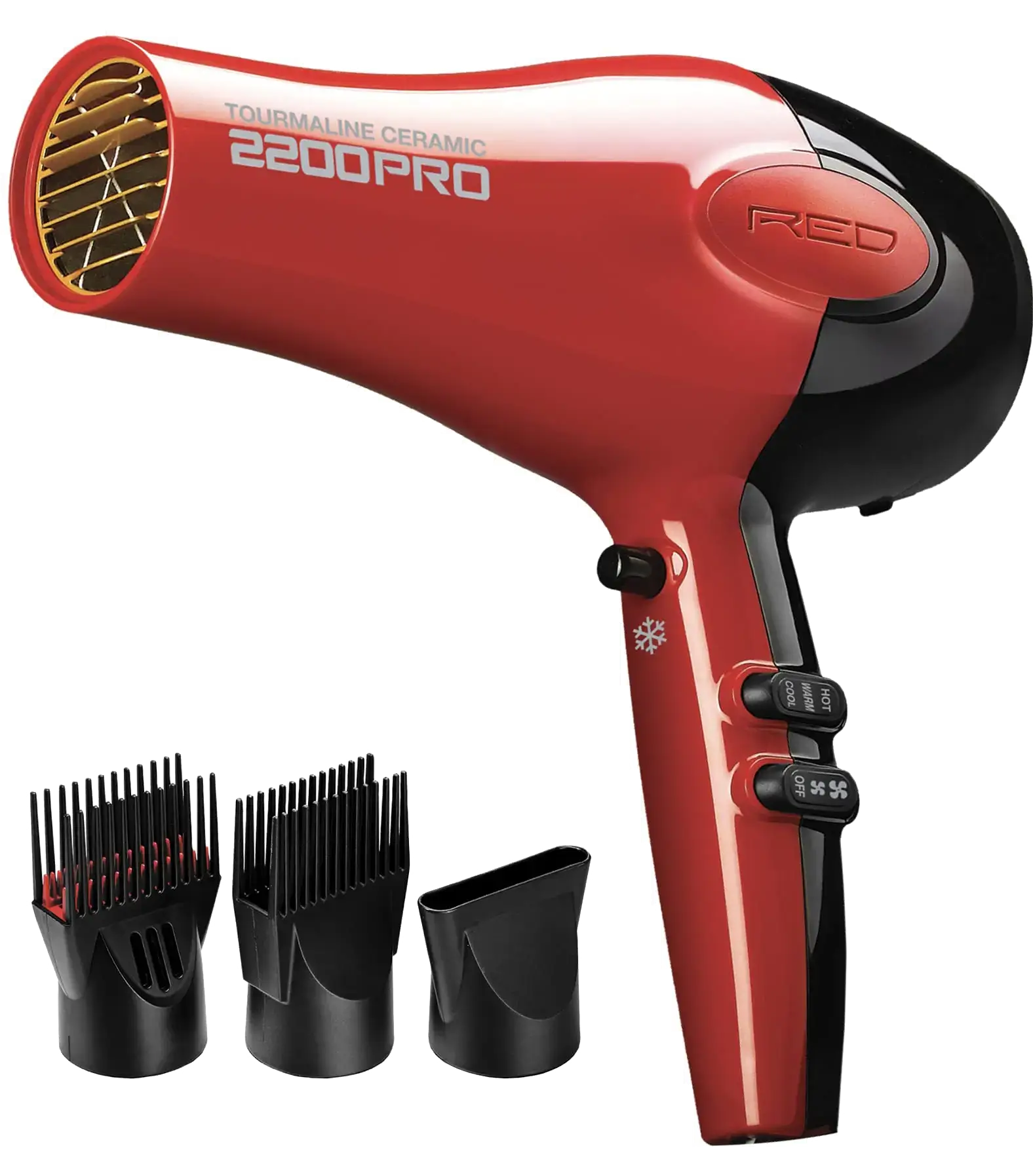
Ceramic hair dryers are designed to distribute heat as evenly as possible, minimizing hot spots that can damage the hair. This even distribution helps maintain a consistent temperature, reducing the risk of overheating and protecting the hair’s natural moisture. Ceramic dryers are ideal for those with delicate, fine, or easy-to-damage hair.
Tourmaline Hair Dryers: For Frizz-Free Shine
Tourmaline hair dryers are known for their ability to emit negative ions, which help break down water molecules on the hair’s surface, speeding up the drying process. This reduction in drying time minimizes heat exposure and seals the hair cuticle, enhancing shine and reducing frizz. They’re perfect for those looking to achieve a sleek, polished look.
Titanium Hair Dryers: For Fast Drying
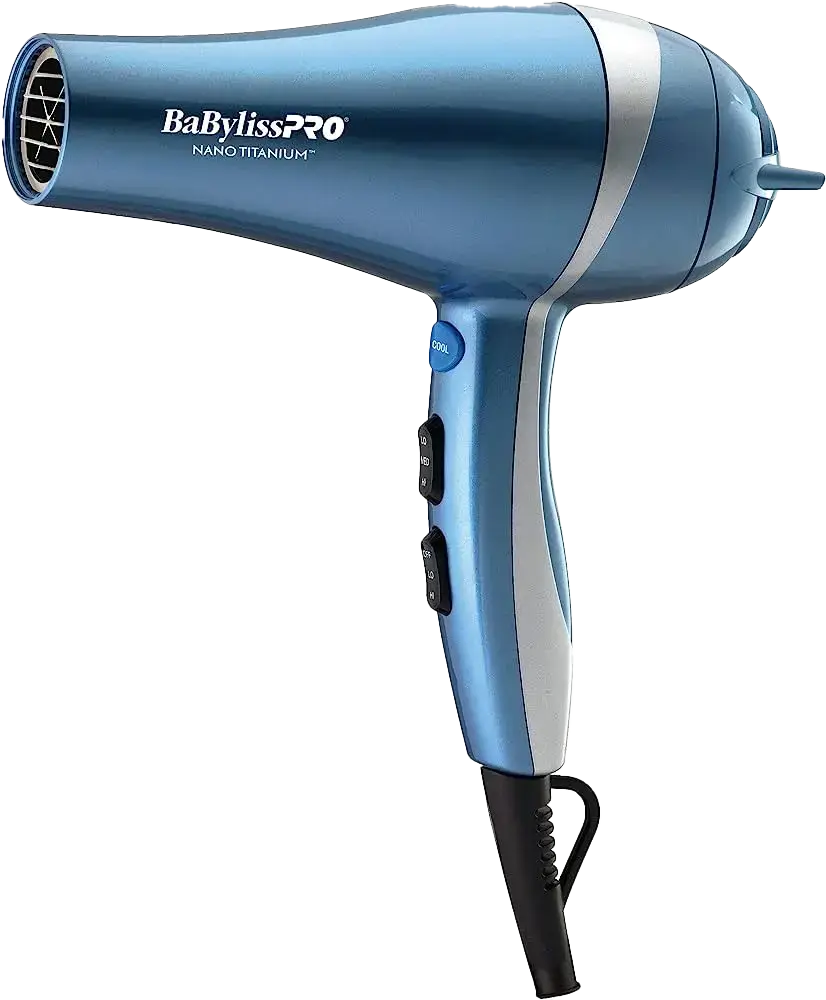
Titanium hair dryers offer a high heat transfer, making them exceptionally efficient at drying hair quickly. This can be especially beneficial for those with thick, dense hair that typically takes longer to dry. However, due to their powerful heat output, titanium dryers might not be the best choice for those with fine or damage-prone hair.
Ionic Hair Dryers: For Smoother Hair
Ionic hair dryers emit negative ions that break apart water molecules, reducing drying time and minimizing heat damage. The ions also help to close the hair cuticle, locking in moisture and reducing frizz for a smoother, shinier finish. These dryers are suitable for all hair types but are particularly beneficial for those with frizzy or dry hair.
Chapter 2: Deciding What You Need
Assessing Your Hair Type and Needs
The first step in choosing the right hair dryer is understanding your hair type and needs. Consider your hair’s texture, density, and current health. For example, fine or damaged hair requires a gentler approach, while thick or curly hair might need more power and heat for effective drying.
Comparing Material Benefits for Your Hair Type
Once you’ve assessed your hair type, compare the benefits of each material to determine which aligns with your needs. If reducing frizz and enhancing shine is your priority, tourmaline or ionic materials might be best. For gentle drying and heat protection, look to ceramic options.
Chapter 3: Additional Features to Consider
Wattage and Power: What’s Best for You
The wattage of a hair dryer affects its power and efficiency. Higher wattage models can dry hair faster but may not always be necessary for fine or delicate hair. Understanding the right balance of power for your hair type is crucial in preventing damage and achieving optimal styling results.
Heat and Speed Settings: Customizing Your Drying Experience

Adjustable heat and speed settings offer control over your drying experience, allowing you to tailor the dryer’s performance to your specific hair type and styling needs. Lower heat settings are essential for fine or damaged hair, while higher settings can efficiently dry thicker hair types.
Attachments and Accessories: Enhancing Your Styling
Attachments like diffusers and concentrators can further customize your styling experience. A diffuser is ideal for curly hair, distributing heat evenly to maintain curl integrity and reduce frizz. A concentrator nozzle focuses the airflow for precise styling, perfect for straightening or working on specific sections of hair.
Chapter 4: Safety and Maintenance
Understanding Safety Features
Safety should always be a top priority when selecting and using a hair dryer. Modern hair dryers come equipped with several safety features designed to protect you and extend the life of the device. Automatic shutoff is crucial; it prevents overheating by turning the dryer off when it gets too hot. A cool shot button is another significant feature, providing a blast of cool air that helps to set styles and also cools the dryer down. Ground fault circuit interrupter (GFCI) plugs are essential for bathroom use, protecting against electric shock in wet environments. Understanding these features and how they contribute to safe operation will guide you in making a more informed purchase.
Maintaining Your Hair Dryer for Longevity
To ensure your hair dryer lasts as long as possible, regular maintenance is necessary. Cleaning the lint filter is a simple but critical task that keeps the dryer running efficiently and prevents overheating. Inspecting the cord for damage can prevent potential hazards. Storing your dryer properly when not in use, avoiding wrapping the cord too tightly, and keeping it in a dry place can significantly extend its life. Additionally, being mindful of not dropping or mishandling the dryer will keep it in good working condition and ensure it serves you well for years to come.
Chapter 5: Budget and Brand Considerations
Finding the Best Value for Your Money
Choosing the right hair dryer involves balancing cost with features. It’s not always necessary to splurge on the most expensive model to achieve professional results. Start by identifying the features that are most important to you and your hair type. Then, research and compare models within your budget range that offer these features. Look for warranties and customer reviews to gauge the durability and reliability of the product. Remember, investing in a slightly more expensive dryer that meets all your needs can be more cost-effective in the long run than replacing a cheaper, less effective model.
Top Brands and Their Material Offerings
Several brands stand out for their quality and range of material offerings in hair dryers. Dyson is renowned for innovative technology and efficient designs, often leading the pack in terms of power and precision drying. T3 offers a range of ceramic and tourmaline hair dryers that are beloved for their fast drying times and hair-protecting technologies. BaBylissPRO is another top brand, known for their durable titanium dryers that provide quick and even heating. Researching these and other brands can help you understand the variety of options available and what sets each apart in terms of material technology and hair care benefits.
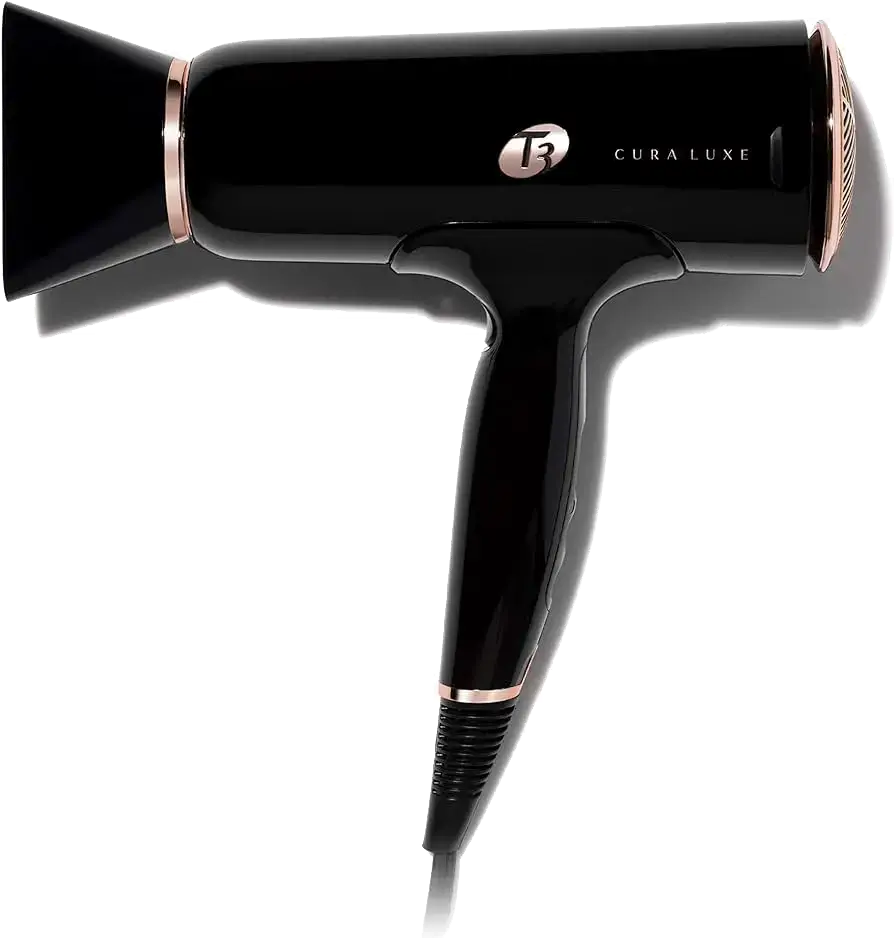
Conclusion
Choosing the right material for your hair dryer is about understanding your hair’s specific needs and the benefits each material offers. Ceramic is ideal for even heat distribution, making it perfect for fine or delicate hair. Tourmaline helps in reducing frizz and adding shine, suitable for curly or frizzy hair types. Titanium offers quick drying for thick or heavy hair, whereas ionic technology is best for locking in moisture, making it great for dry or damaged hair. Consider these factors along with the safety features, maintenance requirements, budget, and brand offerings to make an informed decision that will leave you with a reliable, effective tool for your styling needs.
FAQs: Answering Your Common Concerns
Q: How often should I replace my hair dryer?
A: Typically, a quality hair dryer can last between 4 to 5 years with proper maintenance. However, consider replacing it if you notice any decline in performance or visible damage.
Q: Can the material of a hair dryer really make a difference in hair health?
A: Absolutely. The right material can help reduce heat damage, improve drying time, and enhance your hair’s overall health and appearance.
Q: Is it worth investing in a professional-grade hair dryer?
A: If you regularly use a hair dryer and are looking for superior performance and durability, investing in a professional-grade model can be worthwhile.
Q: How can I reduce hair damage from using a hair dryer?
A: Use the dryer on a lower heat setting, keep it moving instead of focusing on one spot, and use a heat protectant product to shield your hair from excessive heat.
Glossary: Key Terms and Technologies Explained
Ceramic: A material used in hair dryers for even heat distribution, which helps to dry hair gently and reduce heat damage.
Tourmaline: A semi-precious mineral that emits negative ions when heated, leading to smoother, shinier hair by reducing frizz and enhancing moisture retention.
Titanium: A lightweight material known for its ability to heat up quickly and maintain a consistent temperature, ideal for thick, dense hair that requires more heat for drying.
Ionic Technology: A feature in some hair dryers that releases negative ions to break down water molecules, allowing for faster drying times and smoother hair by reducing static and frizz.
Wattage: Refers to the power output of a hair dryer. Higher wattage hair dryers can produce more heat and airflow, leading to faster drying times.
Heat Settings: The various levels of heat that can be selected on a hair dryer, allowing users to choose the appropriate temperature for their hair type to avoid heat damage.
Speed Settings: The control that allows users to adjust the airflow speed of the hair dryer, providing versatility for different drying and styling needs.
Appendices
Appendix A: Comparison Chart of Hair Dryer Materials

Appendix B: User Reviews and Testimonials
Ceramic Hair Dryer: “Since I switched to a ceramic hair dryer, I’ve noticed less damage and my hair feels healthier. It’s gentle and works well for my fine hair.” – Sarah L.
Tourmaline Hair Dryer: “My hair used to be so frizzy, especially in humid weather. The tourmaline dryer has made a noticeable difference. It’s shinier and way less frizzy.” – Kevin T.
Titanium Hair Dryer: “I have really thick hair that used to take forever to dry. The titanium hair dryer has cut my drying time in half and it doesn’t feel like it’s frying my hair.” – Mia R.
Ionic Hair Dryer: “I was skeptical about the ionic technology, but it truly does make my hair smoother and I spend less time with the flat iron. It’s a game changer.” – Alex D.
Acknowledgements
This guide would not have been possible without the insights and expertise of numerous individuals who are passionate about hair care and technology. We extend our sincerest gratitude to the professional hairstylists, engineers, and researchers who contributed their knowledge and experience. Special thanks to the users who shared their personal reviews and testimonials, offering valuable perspectives that enrich this guide.
Contributors and Experts Consulted
Hairstylists: A panel of experienced hairstylists provided input on the practical aspects of using different hair dryer materials and technologies on various hair types.
Material Scientists: Experts in materials science contributed their understanding of how different materials transfer heat and affect hair at the microscopic level.
Consumer Advocates: Representatives from consumer advocacy groups ensured that the guide addresses common concerns and questions from a consumer perspective.
Users: Individuals who generously shared their personal experiences and outcomes using different types of hair dryers, adding real-world insights to our research.

